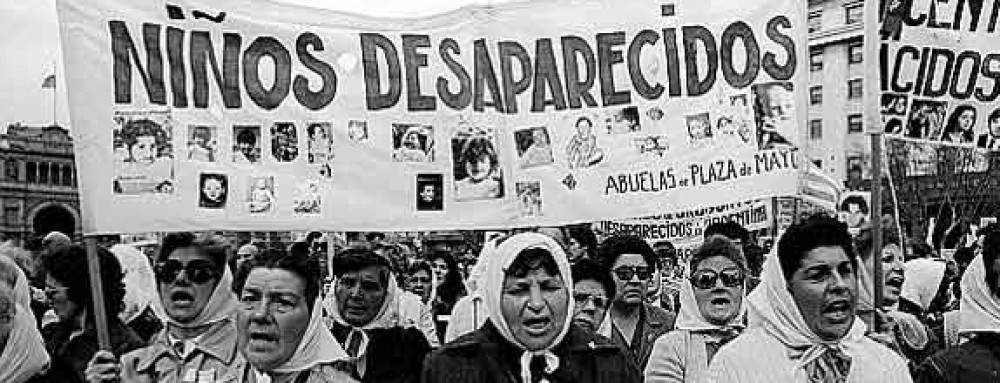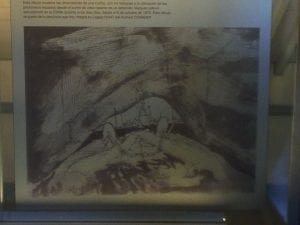
In the basement of the building, MarySue stands in front of a memorial to those who we know were “transferred” to the air force base to be dropped in the ocean. Only one photo depicts a survivor, who was the photographer and was able to sneak the film out.
Our second-to-last stop of this trip was ESMA (Navy School of Mechanics), a detention center off of another bustling road in Buenos Aires. At first look, the grounds are beautiful. The site looks like a small college campus, and it’s hard to imagine the horrors that occurred here. When you get to the actual building in the corner of the grounds, the air shifts as you recognize the familiar rows upon rows of photos of disappeared people. The building is extremely hollow and cold.
We made our way to the basement. Prisoners were taken here, tortured, and interrogated. One of the more disturbing things we learned there was the language officers used as codes. To be “transferred” meant you were being sent off to your death. They dubbed the hallway of the basement “Happiness Avenue” as a cruel psychological tactic.
While the basement was grim, the Capuche (“hood”) was worse. This is where prisoners were held daily. They were kept in small quarters with hoods on their heads and their limbs bound. There were video testimonies from survivors who noted the sheer inhumanity of such a condition, one that was not human. It was complete isolation and psychological torture.
At the beginning of the trip, we learned about the prisoners being dropped from planes to drown. ESMA was where they were sent from. Being there and then traveling to the coast, where we saw memorials and tributes to those lost in the sea, it was hard to imagine how one human could do this to another. That was perhaps the hardest concept for me to grasp on this trip. What does it take for you to believe that forcing physical and mental torment on another person was appropriate? Why were so many people complicit? I think the answer lies in instability. Mass Killings in Argentina (Staub) claims “When life conditions are complex and difficult, submitting to an authority that offers a vision can satisfy important needs and goals. The military, although unable to stabilize the country economically or politically, had become the big brother in Argentina. Much of the population and political leadership relied on it, and the rest accepted its dominance.”
You can draw troubling connections to the political state of Argentina’s pre-dictatorship to the United States. Our country is more polarized than ever, and it’s possible that a power similar can offer a sense of stability to those who long for it – and who knows what their agenda will be.

